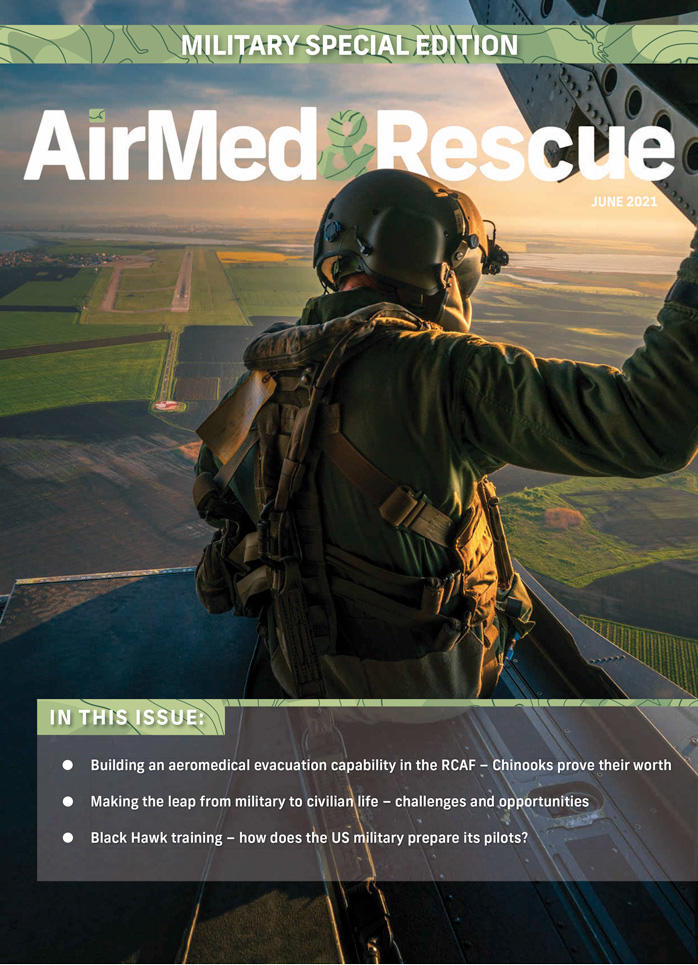Blizzard Protection Systems focuses on HEMS patients
An interview with Robert McGuffie, Director of Blizzard Protection Systems, gave AirMed&Rescue a chance to find out more about the company’s latest product innovation – the Air Ambulance Edition of the Blizzard blanket
Earlier this year, you launched the ‘Air Ambulance Edition’ Blizzard blanket, having worked with Dorset & Somerset Air Ambulance. How did this product innovation come about?
Dorset & Somerset Air Ambulance (DSAA) have been a customer of ours for some time. Just over 12 months ago, we had some very detailed and useful feedback from them regarding our products, and it was immediately obvious that we had a customer who could help us develop and improve the products we were offering them.
DSAA were incredibly helpful and willing to participate in our product development from the beginning, and they continued to support it fully throughout. Once we took their feedback into account, we worked hard to fully understand how they use our product in the field, and this guided us through the development program. They are such a great professional team; it really has been a privilege to work with them.
How has the blanket been adapted for use specifically in the air medical environment?
Once we fully understood how the product was being used in the field, we had a number of specific areas that we needed to improve. The way the product is carried from the aircraft was a consideration – to meet their needs, a carry handle has been built into the packaging. At the same time, the amount of packaging used, which then has to be disposed of causing a potential hazard, was reduced to a single bag.
We then changed a number of features on the blanket itself to make it safer, more effective and easier to use in the air ambulance environment. Toggles were removed to reduce snagging issues for aviation safety. The packing process was changed to speed up and simplify the unpacking process, the heat pad locations were changed to improve their effectiveness and casualty comfort. A different color beanie hat was introduced as well to make it easy to identify when unpacking.
How did Covid affect the product’s development and testing phases?
There were some delays due to Covid. The biggest impact was on our ability to meet in person with DSAA crews to get feedback and training completed as the developments took place. Wherever possible, online conference calls covered that requirement.
Product evolution often comes as a result of feedback from customers of existing products on offer; how much do you rely on users to give you decent feedback so that you can continue to meet their needs?
Customer feedback is a massive part of what we do as a business, but it is the quality and context of the feedback that counts more than anything. We struck lucky with DSAA because their feedback was very specific and brilliantly communicated. As a company striving to improve our products, they have been invaluable to us.
How do you envision new technologies affecting trauma medicine equipment in the future, either in terms of materials or connectivity?
The biggest opportunities for us at the moment are in material developments. We are constantly looking for ways to improve patient outcomes. Any increase in performance or something that can provide additional features to improve a casualty outcome will always be of interest to us. Recent technological advancements in the field of film coatings, for example, has provided us with an exciting opportunity to add key features to some of our products, without adding significant cost.
One other key element in improving trauma medicine equipment is the co-operation between manufacturers and end-users. Technology plays a massive part in this; it facilitates conference calls, data collection, testing etc., so we are certain that a number of technologies will help improve this vital area of support.

June 2021
Issue
In this issue:
- Building an aeromedical evacuation capability in the RCAF – Chinooks prove their worth
- Making the leap from military to civilian life – challenges and opportunities
- Black Hawk training – how does the US military prepares its pilots?
- Giving old aircraft a new lease of life as aerial firefighters
- Interviews: US Air Force PJs past and present; Dr Neville Vlok, HALO Aviation
- Provider Profile: Keewatin Air
Editorial Team
The AirMed&Rescue Editorial Team works on the website to ensure timely and relevant news is online every day. With extensive experience and in-depth knowledge of the air medical and air rescue industries, the team is ready to respond to breaking industry news and investigate topics of interest to our readers.


